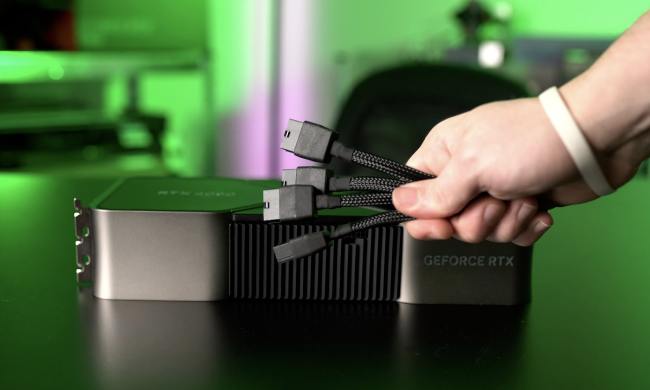While some brands like Nvidia and AMD are focused on producing graphics cards for one or two screens, there’s another brand, Matrox, that’s a little more ambitious when it comes to multi-monitor support. The new Matrox C900 takes up just a single PCIe lane, but supports up to nine displays at once via mini-HDMI.
Obviously a graphics card like the C900 is meant for places with expansive digital signage and presentations, as it can handle up to nine monitors at 1080p and 60Hz refresh rate. That’s an impressive 5,760 x 3,240 when the monitors are oriented in a 3×3 configuration, and because it’s a single lane card, it can be easily paired with a second for a total of 18 monitors in just two PCIe slots.
“Three-by-three configurations are the sweet spot for many digital signage installations and control room video walls,” said Matrox business development manager Caroline Injoyan, “Now with C900, for the first time, nine Full HD displays can be driven from a single-slot card and system integrators can easily offer a turnkey solution to power three-by-three video walls.”
One might imagine this sort of setup in a security office with a lot of cameras, or used to run many displays at a tradeshow. It’s usually difficult to hook that many monitors up to single system, but a card like the C900 makes it easy.
Aside from the outputs, the C900 is actually an impressive little card. It boasts 4GB of memory, plus support for digital audio over HDMI, DirectX 12, and OpenGL 4.4, for ideal performance and perfect synchronization across all nine monitors. But don’t expect to buy it for gaming. Its designed to handle a lot of monitors, but not designed to handle serious 3D graphics.
Matrox hasn’t announced a release date for the C900, although it does specify the card will be available in the second quarter of 2016. No word on price yet either, but with the six-monitor Matrox C680 retailing for over $600, we expect the C900 will push a thousand dollars when it hits shelves.


